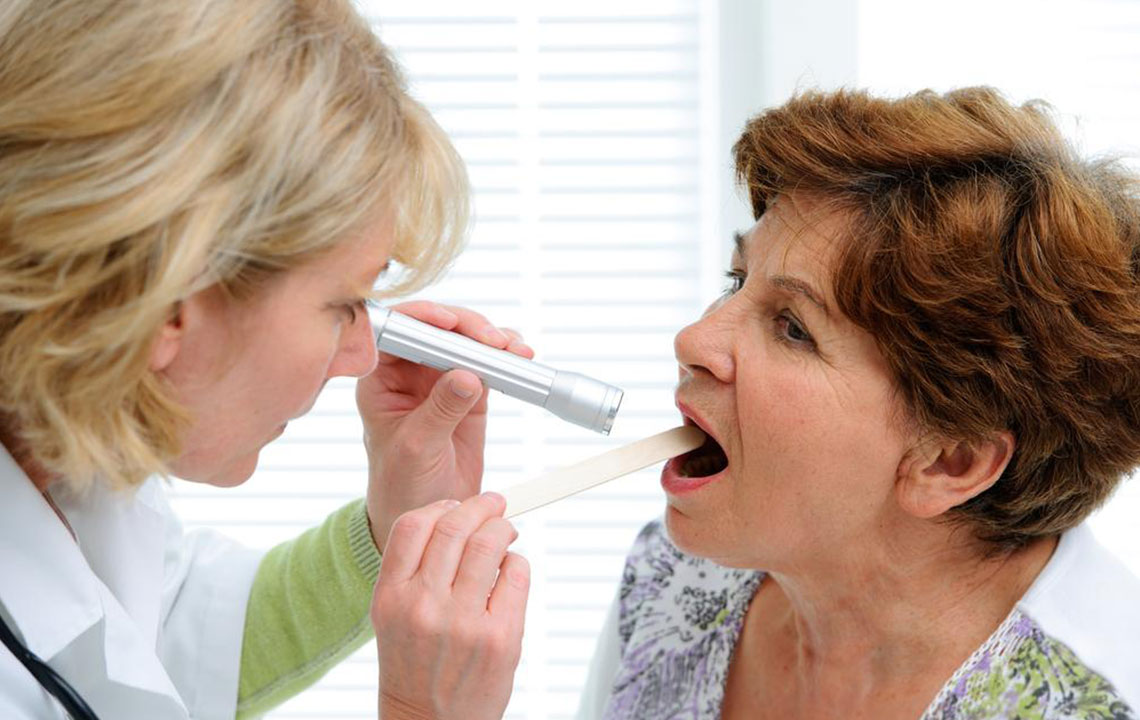Oral Cancer – Symptoms, Causes and Management Options
A sore or unusual growth in the mouth that does not go away with time can be an indication of oral cancer. Oral cancer affects 50,000 people in the country annually, 70% of whom are men. Cancers of the lips, tongue, cheeks, floor of the mouth, pharynx (throat), etc., are all types of oral cancer. If not treated in time, it could be fatal. Early oral cancer screening makes it easier to be treated.

Oral cancer screening
A dentist or doctor will examine a patient for oral cancer screening to check for any precancerous or cancerous cells. Oral cancer screening aims to detect the disease early when there is a better possibility of curing it. Most dentists examine a patient’s mouth to check for oral cancer during a typical dental visit. Some dentists may employ further examinations to help with signs of oral cancer.
The likelihood of a patient receiving a successful diagnosis and treatment of oral cancer can be increased. Most dentists advise routine mouth-wide exams for the detection of oral cancer because of this. Adults over 20 should get oral cancer screening every three years, while those over 40 should get screened yearly.
A yearly oral cancer screening should be requested by those with risk factors, the human papillomavirus (HPV), or a family history of cancer to detect early signs of oral cancer.
The most typical tests:
Physical examination: The dentist or doctor will look inside the mouth from top to bottom. The head, face, and neck will also be checked for possible oral cancer symptoms.
Brush biopsy: Also known as scrape biopsy or exfoliative cytology, it is a procedure in which medical professionals gently scrape a suspected cancerous spot using a small brush or spatula.
Incisional biopsy: A small portion of tissue will be cut out during an incisional biopsy so that cells can be obtained and tested for malignancy to detect signs of oral cancer.
Indirect laryngoscopy and pharyngoscopy: The doctor examines a patient’s throat, the base of the tongue, and a portion of the larynx using a small mirror on a long, thin handle (voice box).
Direct pharyngoscopy and laryngoscopy: This helps look at parts of the throat and mouth that aren’t visible with mirrors.
Oral cancer signs and symptoms
Lumps, rough patches, crusts, or eroded regions on the lips, cheeks, gums, or other internal mouth areas.
Red, velvety white, or speckled patches in the mouth
Bleeding in the mouth without any injuries
Any part of the face, lips, or neck that experiences unexplained discomfort, numbness, or tenderness
Persistent mouth, neck, or cheek sores that bleed easily and take longer than two weeks to cure
Pain or sensation of something being stuck in the throat
Difficulty speaking, moving the mouth or tongue, having trouble swallowing or chewing
Persistent sore throat, voice alteration, or hoarseness
Soreness or swelling in the jaw. Wearing dentures may be painful or challenging.
An earache
A modification to fit the dentures together
A dramatic loss of weight
Causes of oral cancer
The squamous cells in the mouth cavity are where oral cancer begins. When the DNA of healthy squamous cells changes and the cells start to expand and increase, the cells turn malignant. These malignant cells may eventually move to other mouth regions, head, neck, or other body parts.
Risk factors
Several things can increase the risk of developing mouth cancer along with oral cancer causes, such as:
Getting too much sun exposure on the lips
Human papillomavirus, a sexually transmitted disease (HPV)
A lowered immunological system
Prevention
There is no known method to stop oral cancer. But if the following steps are followed, the chance of getting oral cancer can be reduced.
Do not expose the lips to harsh sunlight
Visit the dentist frequently
Ways to identify potential oral cancer
Early oral cancer symptom detection can lessen the likelihood of advancing or spreading cancer. A regular self-exam can help find oral cancer early. Here’s how to check for oral cancer in the mouth, throat, and neck:
Feel the top of the mouth, the front of the gums, and lips.
Look for lumps or swollen lymph nodes in the neck and under the lower jaw.
Examine the mouth using a mirror and a bright light.
Look at the roof of the mouth while tilting your head back.
Pull out cheeks to see the inside of the mouth, the cheek lining, and back gums.
After pulling it out, look at the tongue’s top, bottom, and sides. To see the mouth’s floor, gently push the tongue back.
Now that you have an overview of oral cancer, it is also important to know that radiation therapy, surgery, or chemotherapy are the three primary forms of treatment for oral cancer conditions. Discuss oral cancer causes, alternatives, drawbacks, and management strategies with the doctor before starting the treatment.




